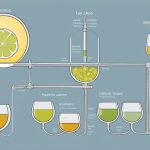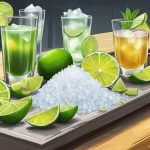MacGyver is a legendary character known for his resourcefulness and ability to solve problems using unconventional methods. As a beer enthusiast, I was curious to see if I could channel my inner MacGyver and try my hand at “MacGyvering” a beer. With a mixture of excitement and skepticism, I set out on this unconventional brewing experiment.
Ingredients:
Before diving into the process, I gathered the ingredients needed to create my own MacGyver-inspired beer. Here’s what I used:
- 1 cup of malt extract
- 1 tablespoon of hops
- 1 teaspoon of yeast
- 1 gallon of water
- Optional: Additional flavorings such as fruits, spices, or herbs
The Process:
I started by heating the gallon of water in a large pot over medium heat. Once the water reached a simmer, I added the malt extract and stirred until it dissolved completely. This malt extract serves as the base for the beer and provides the necessary sugars for fermentation.
Next, I added the hops to the pot and allowed them to steep for about 10 minutes. Hops not only contribute to the beer’s flavor but also act as a natural preservative.
After the hops steeped, I removed the pot from heat and let it cool down to room temperature. Once cooled, I transferred the mixture to a clean and sanitized fermentation vessel, such as a glass carboy or plastic bucket.
Then, I sprinkled the yeast over the mixture and gently stirred it in. The yeast is responsible for converting the sugars in the malt extract into alcohol during the fermentation process.
At this point, I covered the fermentation vessel with a clean cloth or a fermentation lock to allow gases to escape while preventing any contaminants from entering.
I stored the vessel in a cool, dark place and let the magic of fermentation take place over the next 1 to 2 weeks. During this time, the yeast consumes the sugars, producing alcohol and carbon dioxide as byproducts.
Adding Personal Touches:
Being a fan of experimenting with flavors, I decided to add a personal touch to my MacGyvered beer. I opted to add some fresh raspberries during the fermentation process to infuse a fruity flavor into the brew.
I carefully mashed the raspberries and added them to the fermentation vessel after a week of fermentation. This additional step allowed the beer to take on the flavors of the fruit, making it uniquely my own.
The Verdict:
After patiently waiting for the fermentation to complete, it was time to taste the result of my MacGyvered beer experiment. I carefully poured a glass, taking in the aroma and admiring the beautiful amber color.
The first sip revealed a well-balanced beer with a subtle hint of raspberry. The carbonation was just right, giving it a refreshing effervescence. While it may not rival the professionally brewed beers, it was a testament to the creativity and resourcefulness of MacGyver himself.
Conclusion:
MacGyvering a beer was not only an entertaining experiment but also a reminder of the endless possibilities when it comes to brewing your own beverages. While the process may require some trial and error, it’s a rewarding experience to create something unique and tailored to your taste preferences.
Remember, brewing your own beer should always be done responsibly and in compliance with the applicable laws and regulations. Cheers to embracing your inner MacGyver and exploring the world of homemade brews!







